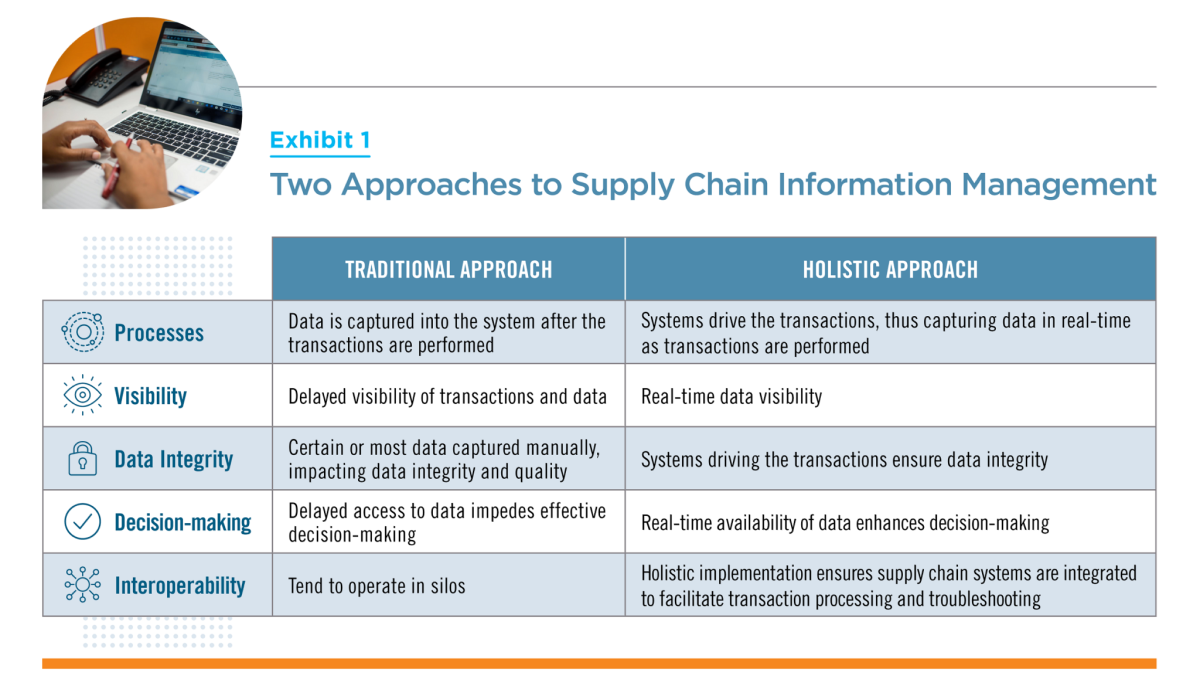The USAID Global Health Supply Chain Program-Procurement and Supply Management (GHSC-PSM) project developed SCISMM so countries could holistically analyze their supply chain systems and plan investments in supply chain information systems. This holistic approach is overarching across all critical processes, levels, and commodity types.
The SCISMM is a guiding tool for supply chain actors, including governments, donors, implementing partners and procurement agents, to plan and strategize future investments and enhance operations' functionality. The model evaluates current capabilities or target priority areas for improvement or development, as demonstrated in its application in Nepal, Pakistan, and Rwanda.
The SCISMM was developed with core supply chain principles in mind, including the Supply Chain Operations Reference (SCOR) model and the American Productivity & Quality Center (APQC) Framework, and can be applied to any type of commodity. With the maturity model, supply chain information system capabilities--such as planning, order management, warehouse management--and foundational capabilities--like master data management and interoperability--are categorized across four maturity levels. Each level defines the extent and maturity of system capabilities. The model provides pre-requisites for each level and develops baselines and measures improvements as systems mature.

